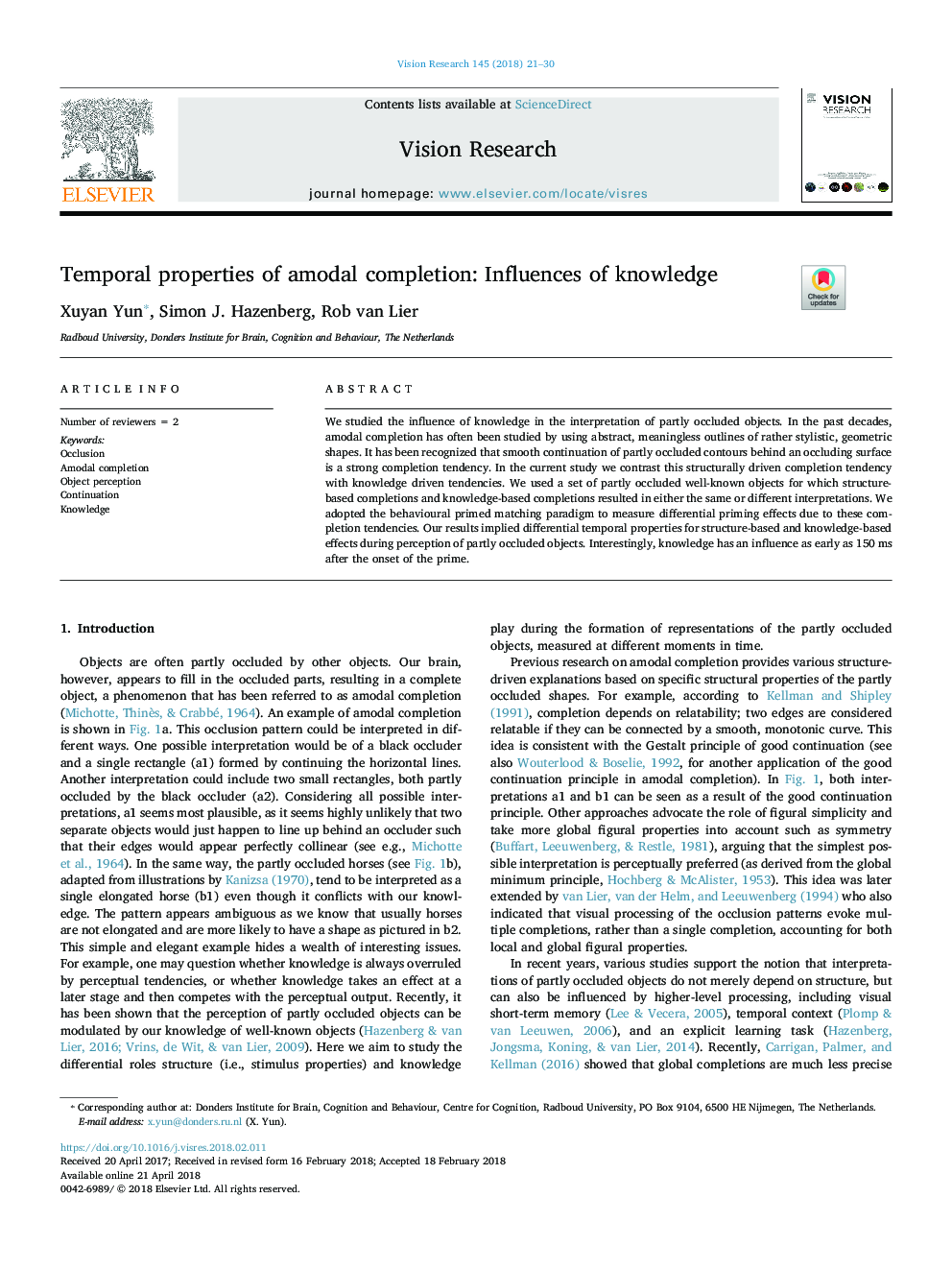| Article ID | Journal | Published Year | Pages | File Type |
|---|---|---|---|---|
| 8795309 | Vision Research | 2018 | 10 Pages |
Abstract
We studied the influence of knowledge in the interpretation of partly occluded objects. In the past decades, amodal completion has often been studied by using abstract, meaningless outlines of rather stylistic, geometric shapes. It has been recognized that smooth continuation of partly occluded contours behind an occluding surface is a strong completion tendency. In the current study we contrast this structurally driven completion tendency with knowledge driven tendencies. We used a set of partly occluded well-known objects for which structure-based completions and knowledge-based completions resulted in either the same or different interpretations. We adopted the behavioural primed matching paradigm to measure differential priming effects due to these completion tendencies. Our results implied differential temporal properties for structure-based and knowledge-based effects during perception of partly occluded objects. Interestingly, knowledge has an influence as early as 150â¯ms after the onset of the prime.
Related Topics
Life Sciences
Neuroscience
Sensory Systems
Authors
Xuyan Yun, Simon J. Hazenberg, Rob van Lier,
